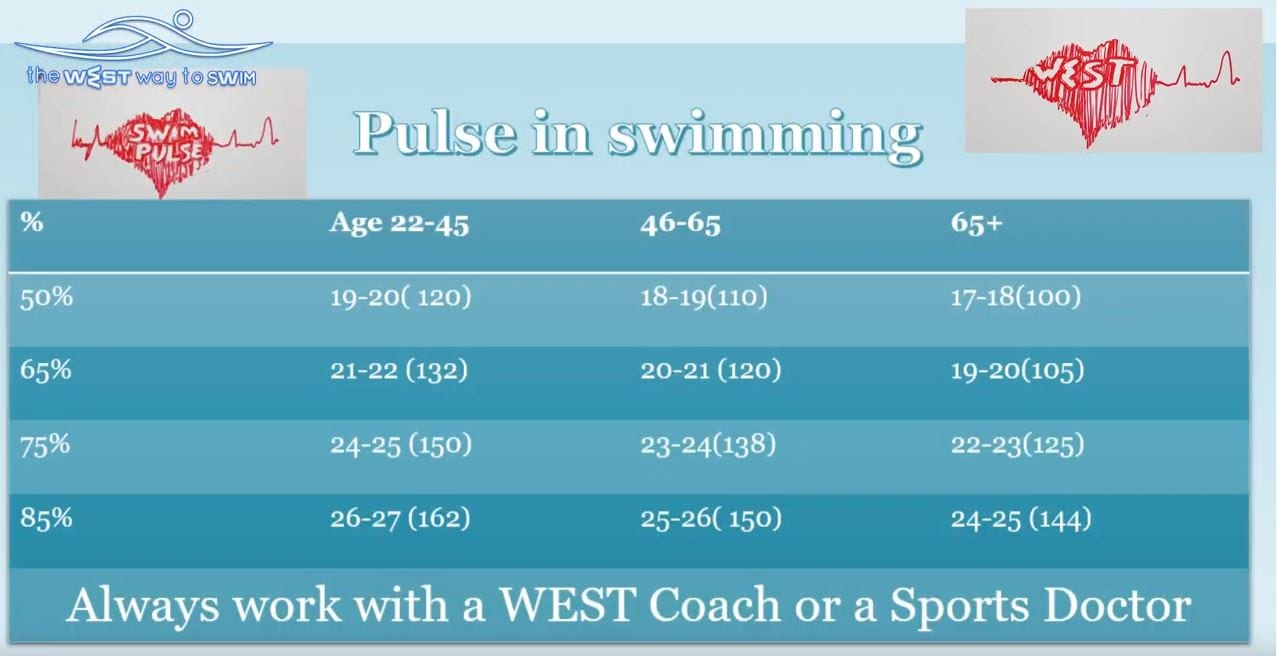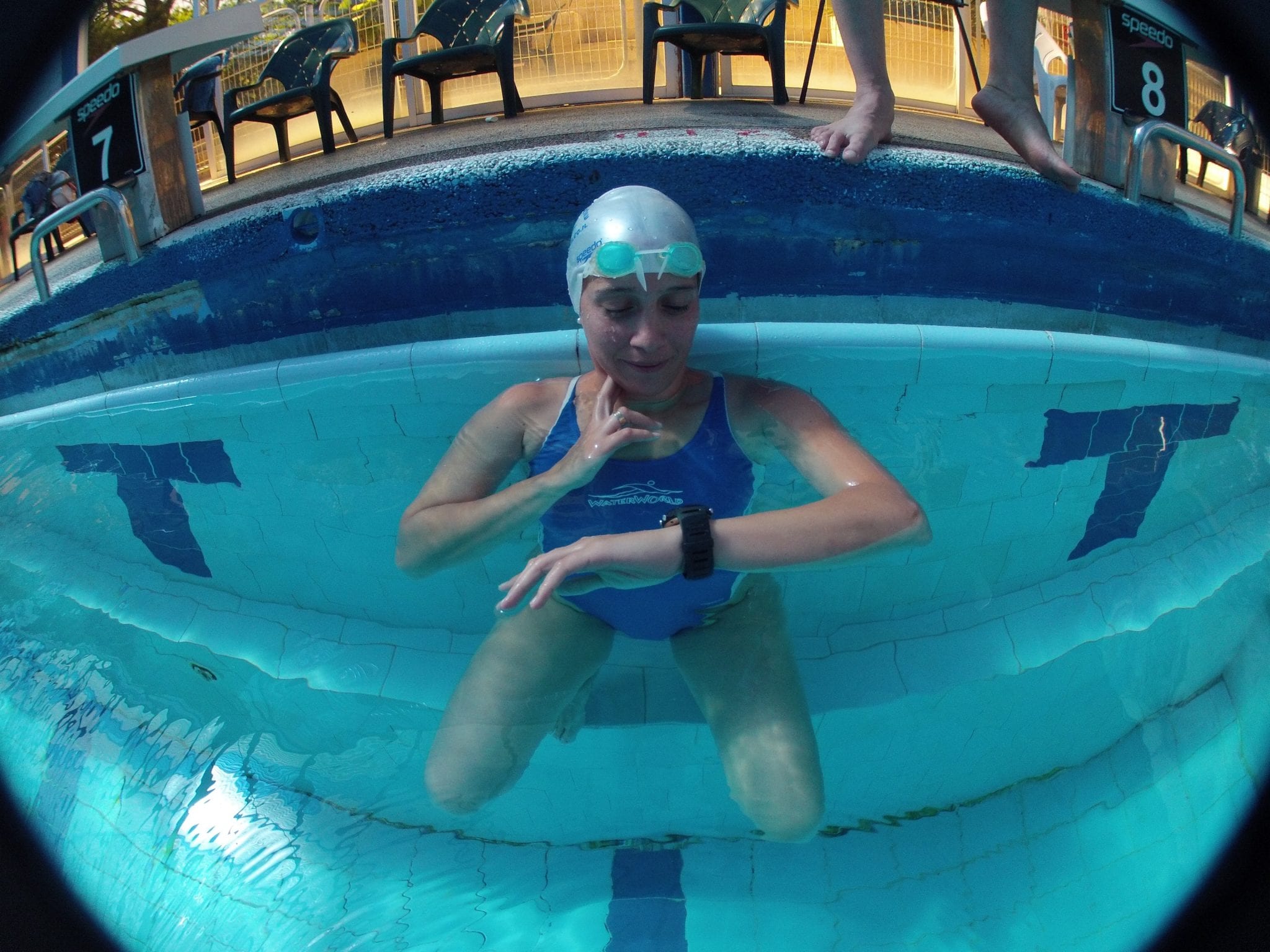Heart Rate when swimming – why is it so important to use it accurately according to your goals
This article is very important for swimming beginners, masters, triathlon, people who learn how to swim, open water swimmers, but!! when learning how to swim it is important not to swim faster than 65% of your maximum hart rate.
Let’s start with how to measure your heart rate.
Place two fingers on your neck next to the Adam’s apple, using your right hand and feel your way up until you feel your pulse, which indicates the number of times your heart beats per minute. You can also measure your pulse using your wrist, chest, or temple.
Once you feel your pulse, count your heart beats for exactly 10 seconds and multiply by 6. So if your pulse is 22 beats per 10 seconds it means a heart rate of 132 (22 X 6). At the end of the video you’ll understand how to use your heart rate and what is the main purpose of HR zones for the average swimmer and especially for swimmers over the age of 18.
You can always use a pulse watch but wear a tight shirt or a full swimsuit otherwise the watch band might slip off due to the male body structure, when stretching the body in an arrow position while pushing off the wall, thus taking an inaccurate measurement.
Why do we measure only 10 seconds and not 15 seconds or a minute?
The answer is clear, after 10 seconds our heart rate begins to slow so the final result would not be accurate. In addition, in some exercises we don’t want to rest this long at the wall but take our pulse, mark our time and continue swimming.
So when do we measure our pulse for a full minute? We do it in the morning, after a good night sleep and without working out the night before. This is our true resting heart rate and it’s very important to understand our heart rate chart. Resting heart rate for swimmers or long distance athletes is about 40 beats per minute, for the average person it’s about 65 and for non- athletes it’s close to 80.
In this video we will talk about the main heart rate zones and the differences in our heart rates at every age.
How do we calculate a heart rate?
For men: 220 minus the age = maximal HR (for trained people who work out regularly twice a week or more, maximal HR is 220 minus the age + 10)
For women: 226 minus the age = maximal HR using the exact same principle (trained women add about 10 beats per minute), so the more trained we are, the higher our heart rate is.
.
Resting heart rate is measured for a minute, after a good night sleep without working out the night before, or in the gym before a stress test, in which cases our heart rate will be slightly higher and inaccurate.
The formula is: [(max HR − resting HR) X % Intensity] + resting HR
For example: for a man with a maximal HR 180 and resting HR 60 – the HR at 75% Intensity (meaning his aerobic heart rate) is: [(180 – 60) X 0.75] + 60 = 150. This means the man’s aerobic heart rate is 150 or 25 beats per 10 seconds.
After we’ve learned how to calculate and measure our heart rate, let’s see what is the purpose of each heart rate zone.

50% HR is the classic heart rate for warming up, loosening and especially for dissolving muscle lactic acid. We would always rather swim slowly than to end the workout without loosening. 50% HR should be 20 beats per 10 seconds for people aged 18-45, 19 beats per 10 seconds for people aged 46-65 and 18 beats at the age of 66 and over.

65% HR is the most important working HR for building aerobic capacity. This is actually the low aerobic range, meaning it improves aerobic capacity but allows an easier long distance swim with fewer breaks. This is also the correct range to work on minimal number of strokes, because the muscle is warmed up enough, not oxidized or hard and can be used to increase our motion range when swimming, while protecting our joints.
Most of the aerobic capacity build up is done at 65% HR, which is about 22 beats per 10 seconds for people under the age of 45, and 21 beats at the age of 46-65 or 20 beats at the age of 66 and older.

75% HR is the classic aerobic range, which is very important after the aerobic build up stage. After we’ve build up an aerobic capacity and found the DNA swim style that fits us, we can swim a little faster and for longer distances.
Nowadays, 70% of the post aerobic build up workout is done within the aerobic range.
75% HR should be about 25 beats per 10 seconds for people under the age of 45, 23 beats for people aged 46-65 and 22 for people aged 66 and older.

85% HR is the lactate acid threshold, or the anaerobic range.
This is the heart rate zone where the body actually starts to “burn”. It’s important to feel our heart rate, to get there but not for long. At this HR zone our body takes a long time to recover, it’s harder to maintain the correct style and we need more breaks during the workout. In WEST training programs we will use this HR zone only during intensifying speed exercises, in order to illustrate the differences between the different HR zones.
85% HR should be about 26 beats per 10 seconds for people under the age of 45, 24 beats for people aged 46-65 and 23 for people aged 66 and older.
The last HR zone of 95% is hardly used in the various exercises of WEST technique. We will only use it a few times throughout the season to improve speed.
There is no need to measure it because it varies from person to person. Some trained swimmers aged around 32 might have a pulse of 27 after a very fast swim while others might have a pulse of 32 per 10 seconds.
You should build your personal HR chart after a stress test and the resting HR after a good night sleep.

Each of us is different and in WEST technique training programs we take into account the age, gender, physical ability, previous injuries and a personal exertion scale customized especially for you, so you can optimize your training, control your heart rate and most importantly, enjoy the workout without getting hurt.
rehabilitative



